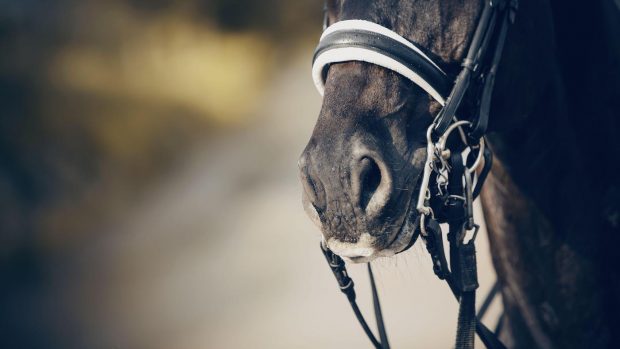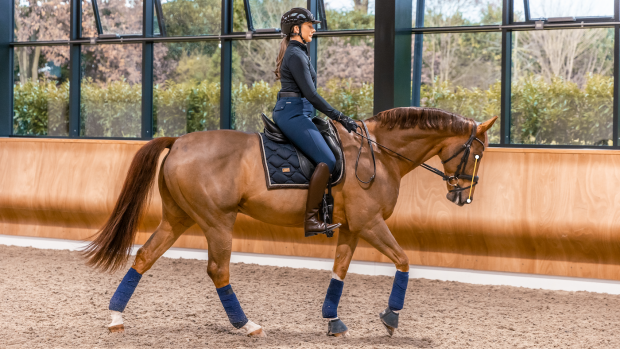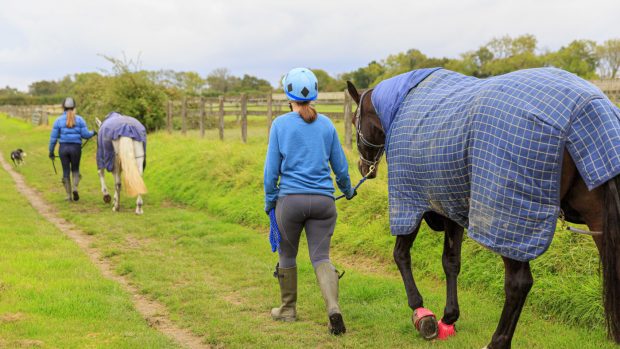Sunday 8 August:
My first day in Ireland is spent at the Dublin Horse Show. But no shopping or watching the showjumping for me.
Instead I spend my day meeting people — first making myself known to the charities I will meet later in the week — the Dublin Society for the Prevention of Cruelty to Animals (DSPCA) and its mother group, the Irish Society for the Prevention of Cruelty to Animals (ISPCA), and the Irish Horse Welfare Trust (IHWT).
Then a cup of coffee with Claire Goodwillie from Killkenny, a graphic designer and advertising agent for the bloodstock industry who has rehabilitated abandoned and maltreated horses for the IHWT for the past eight years.
Claire specialises in turning ‘untouchables’, who cannot be handled when they come to her, into horses with a future.
She tells me that without legislation to enforce passports and microchipping and a system for identifying owners of horses, Irish charities are fighting an unwinnable war — a sentiment I hear again and again on my travels.
I also catch up with David Lalor, vice-president of the Hunting Association of Ireland, and FEI dressage and eventing official Faith Ponsonby, who are kind enough to take time out from their judging and stewarding duties to discuss the situation with me.
Both are involved in the breeding of Ireland’s traditional Irish draught X thoroughbred sports horses and fear the loss of the Republic’s unique breeding lines in the recession.
Talking of the recession there is little sign of Ireland’s horseowners cutting back their spending on their hobby — the tackshops and clothing stalls are heaving with visitors keen to spend their Euros.
As I hobble back to my hotel, blisters protesting at a baking-hot day in semi worn-in boots, I muse on the likely scenes I may see this week and how far removed from this showcase for the Irish horse industry they might be.
Monday 9 August:
Dublin traffic can be murderous and the mania for one-way streets has caught me out many times, so I am pleased to arrive at the DSPCA’s Rathfarnam centre early.
After a long chat with Orla Aungier who manages the centre, and a tour I go out on the road with inspector Liam Kinsella. Liam has been working for the DSPCA for six years, after being a local authority dog warden.
It’s a quiet day welfare-wise as many of Dublin’s horses and ponies are on the road to the horse fair at Tullamore, but I am able to see hundreds of animals dotted across the city — from the disused Dunsink rubbish tip to strips of grass infront of houses.
Many of these horses are thin but none looked in immediate need of the DSPCA.
 But at the centre I had seen the body of a yearling colt euthanased that morning after having been impaled on a fencing post and two foals with blue rope injuries (see right).
But at the centre I had seen the body of a yearling colt euthanased that morning after having been impaled on a fencing post and two foals with blue rope injuries (see right).
Blue nylon rope seems to be popular as a tether in Dublin but cuts through skin and can cause bone-deep lacerations when tied around a hoof or used as a headcollar.
The DSPCA claims it is the biggest cause of injuries in the animals they see.
Horse Sport Ireland
Moving from one end of the Irish horse industry to the other, I head for a Horse Sport Ireland press conference at a swish Dublin hotel.
HSI is announcing its anti-doping programme for the run up to the 2012 Olympics and teams for the World Equestrian Games, but I manage to get a few moments with chief executive Damian McDonald to ask about last week’s announcement about an equestrian industry committee to discuss the welfare crisis.
Mr McDonald is keen to impress on me that the problem is not within organised horse sport and that focussing on the negatives could be very bad for business.
But he admits that the HSI’s job is to try to stem the breeding of middling horses for which there is not a market.
Then in the late afternoon sunshine I set off for my next destination, the Wicklow Mountains and the pretty village of Avoca (where they filmed Ballykissangel for those of you with long memories).
Tuesday 10 August:
I am in the car park bright and early at 8.30am to meet Sharon Newsome and visit the IHWT in Woodenbridge.
While there are a few recovering ponies the IHWT has a very different type of horse at its centre — many in-foal mares and handsome thoroughbred and sport horse youngsters.
A fair number of them were rescued from a Kilkenny farm last December, but others were just dumped in fields, some with injuries.
A big problem is the cost of euthanasia, Sharon tells me. When it costs around €120 (£98) to have a horse shot and taken away, and you might have to wait weeks for someone to come, the temptation to pop them in someone else’s field is too much for some.
But the quality of some of the horses she is caring for is evident.
My next port of call is Rathdrum and Richard and Leo Manley, who have bred a handful of sport horse foals each year since the 60s.
Despite the costs of producing foals outstripping the prices the brothers get for them at Goresbridge sales they intend to keep on going, and their love for their horses is obvious.
“I enjoy knowing where they go and how they are doing,” says Richard, who follows the eventing careers of his mares’ offspring closely.
ISPCA Centre in Co Cork
 Then it’s down the country to Co Cork to visit the ISPCA’s horse centre in Mallow, where I catch up with the charity’s chairman Barbara Bent (pictured right) and the president of Veterinary Ireland Joe Collins.
Then it’s down the country to Co Cork to visit the ISPCA’s horse centre in Mallow, where I catch up with the charity’s chairman Barbara Bent (pictured right) and the president of Veterinary Ireland Joe Collins.
The ISPCA too has some lovely animals which, for no good reason, are unwanted.
But Barbara’s big issue is the trotting ponies that I see as I drive around this part of Western Ireland.
One skinny skewbald mare, tethered on a mown verge in Clonmel, appears to have no water and little grass.
And off the main roads Barbara says it’s worse. Strangles, ringworm and other parasites are freely circulating among the more poorly kept animals.
“I think it’s the saddest place for these horses and ponies to end up,” she says. She is very keen to see a ban on tethering.
Wednesday 11 August
Before my flight back to London I have one more call to make — to the smart Kedrah House Stud in Cahir, Tipperary — as I fly up the M8.
Not for nothing is this area called the Golden Valley, and vet Tom Meagher’s equine practice and stud appears to be a great example of an Irish business riding out the recession.
Tom stands the showjumping sires Lux Z and Ricardo Z among others and he tells me there is no shortage of foreign buyers for the best Irish horses.
He has noticed a large number of broodmares being culled or sold on as riding horses, and believes long-term benefits to Irish breeding may come from the lack of market for mediocre horses.
As he shows me his youngsters it strikes me how important knowing the breeding of your horse is.
His handsome iron grey three-year-old is a dead-ringer for Sonny, a young sport horse I saw at the IWHT, whose dam had to be put down soon after his birth.
But whereas Tom’s youngster (below left) will be worth around €30,000 in a year, Sonny (below right) is as yet unwanted.
 |
 |
Thursday 12 August
Back in London and starting the long slog to turn this feature around in time for this week’s magazine.
I feel as though I have covered a lot of ground, physically and figuratively, in the past four days, and hope I will be able to put over the gravity of the situation and the hope for the future.
Read H&H’s full news investigation into the welfare problems in Ireland, in 19 August issue




